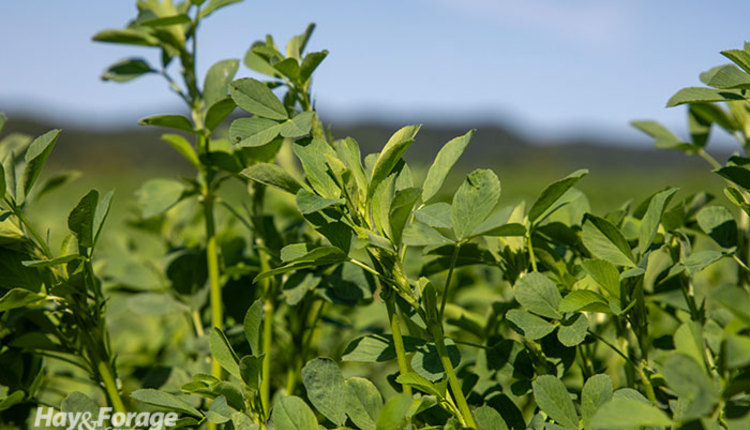
Don’t you love it when a plan comes together?
Of course, not all of them do, and perhaps it’s because of those failed attempts that make a successful execution have double the feeling of self-satisfaction and accomplishment.
Not too long ago, alfalfa had about as much support from federal and state entities as a house built on a foundation of Jell-O. Forage research and extension positions at state universities weren’t getting filled from lack of research funding and budget constraints. Further, federal research funding for alfalfa paled in comparison to other crops with far less economic value. All of this meant that a person had to hunt far and wide for meaningful alfalfa research and the people with money to do it.
All of this has changed in the past three years, and here’s why.
The National Alfalfa & Forage Alliance (NAFA), an organization created by industry leaders in 2006 and whose board has a strong farmer presence, began holding an annual “D.C. Fly-in” in 2010 to meet with legislators and plead a case for additional federal alfalfa research funding. Initially, a big part of the job was simply to explain what alfalfa was and convey its benefits to the agricultural sector and the environment.
Slowly, alfalfa research funding from the Alfalfa Seed & Alfalfa Forage Systems Research Program started to improve from its humble beginnings of $1.35 million. At the same time, there was some resistance to increase funding because alfalfa growers had no “skin in the game,” as many other commodities did through self-imposed or federal checkoff programs.
To address this issue, the U.S. Alfalfa Research Initiative was created by NAFA in 2016. It’s also referred to as the Alfalfa Checkoff Program. Without a federal mandate, alfalfa seed brands voluntarily agreed to collect $1 for every bag of alfalfa seed sold. This money is then turned over to NAFA, which awards it to the nation’s alfalfa researchers on a competitive basis. It should be noted that 100% of the money collected is used for research with no administrative fees assessed. Most participating seed companies chose to simply add $1 to every bag sold rather than make the checkoff dollar a separate invoice line item. Alfalfa growers now had some “skin in the game.”
Over a few years, funding for alfalfa research grew from $1.35 million to $4 million. That was a direct benefit of the Alfalfa Checkoff Program, but more impactful have been the indirect benefits.
With the more than $3 million in checkoff funding collected since its inception, it has leveraged over $40 million in additional federal dollars for research. Moreover, university forage extension and research positions are now being filled, following years of vacancies in many cases. These days, universities won’t fill a position unless adequate research funding is available from outside sources. With new hires, additional students are being trained in alfalfa breeding, agronomy, pathology, and extension. Further, the USDA-Agricultural Research Service has been able to bolster its alfalfa research presence with permanent position funding at several locations across the U.S.
Trouble brewing?
At or soon after implementation of the Alfalfa Checkoff Program, virtually all of the major seed brands signed-on to voluntarily collect the extra one dollar per bag of seed sold. Most recently, 26 alfalfa seed brands have participated in the program. This high level of participation is needed for the program to maintain its effectiveness, and companies are to be commended for their willingness to collect the dollar and write a check a couple of times per year. Given that it doesn’t cost anything to participate, and every alfalfa entity benefits, it’s difficult to understand why all company brands wouldn’t be onboard. To not participate is extremely shortsighted, and lately there have been some dropouts.
Alfalfa growers fund the checkoff, not the companies. If a company decides to exit the program and not collect the extra checkoff dollar, I hope they also lower the cost of a bag of seed by a dollar.
The millions of dollars and positions leveraged by the relatively small collection of funds generated in the still fledgling alfalfa checkoff program is indisputable. One of the offshoots of a consolidated alfalfa seed industry is that it only takes one or two larger companies to stop the level of progress made to date, or perhaps kill the entire program. Regardless of the size of the company or alfalfa grower, it’s important that all do their part. It’s hard to claim that you’re “all-in” on alfalfa without being “all-in” on the checkoff program.
Alfalfa growers, who benefit the most from the checkoff program, need to encourage their seed supplier to participate and thank them for doing so. If they don’t participate, ask them why. Afterall, it’s your dollar per bag that will make this program an even greater success.

